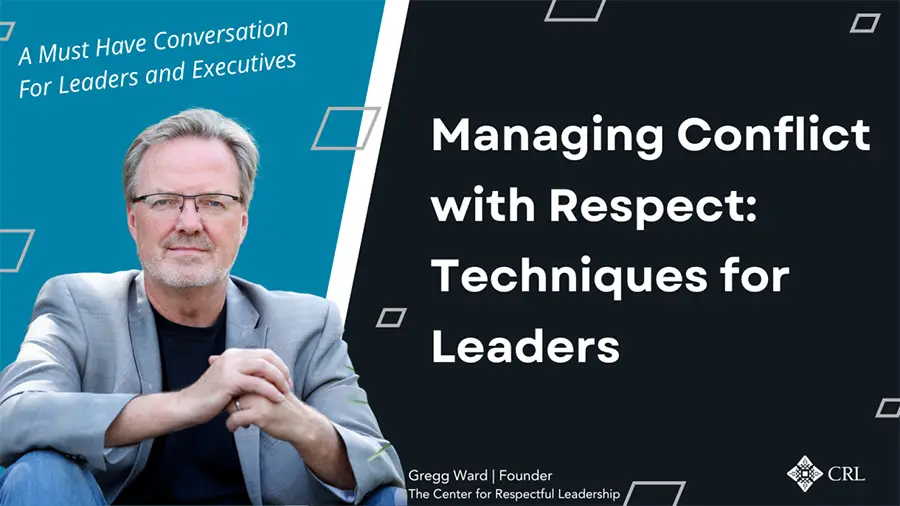
Whether it’s friction between individuals or groups, stereotyping and negative assumptions, miscommunication and a silo mentality, clashes between different personalities and behavioral styles, or a dismissive attitude and resistance to feedback, these challenges are all too common in today’s organizational environments. Let’s explore the current state of workplace conflict and how to manage it.

Insights from the Myers-Briggs Report in 2022 reveal that an overwhelming 85% of employees experience conflict at work, with nearly 30% facing constant conflict. A significant portion of these conflicts, approximately 49%, are attributed to personality and ego clashes, while 34% arise from workplace stress and heavy workloads. Moreover, 25% of employees succumb to absences or sickness due to conflict, highlighting the pervasive impact of these issues. Disturbingly, one in four employees believe their managers handle conflict poorly.
Additional data from SHRM underscores the prevalence of incivility in the workplace, with 66% of workers experiencing or witnessing incivility in the past month and 57% encountering it within the past week. A study that included workers in the US and the UK indicate that one in four workers regularly faces workplace disrespect and incivility, painting a troubling picture of a growing trend of conflict and disrespect in the workplace.

The direct costs of conflict are substantial and include expenses related to investigations, coaching and counseling, and potential legal actions and settlements. However, the indirect costs are often double the direct costs, encompassing increased turnover, loss of productivity, lower job satisfaction, higher presenteeism (where employees are present but not fully engaged), increased recruitment and retraining costs, and damage to the organization’s reputation. These hidden costs can significantly affect an organization’s bottom line and overall morale.

To effectively address conflict, it is crucial to acknowledge its existence, take a proactive stance, manage public outbursts swiftly, and follow up with targeted coaching. Acknowledging conflict involves sharing data during meetings and town halls on its impact and cost, clearly communicating expected behavior, and informing employees about available support for managing conflict. By identifying and empowering “upstanders” and champions of respect within the organization, you can foster an environment where individuals are encouraged to address conflicts as they arise, calm tensions, de-escalate conflict situations, and reinforce organizational expectations.

Suggested phrases “upstanders” can use to diffuse tension include, “Let’s dial it down,” “We don’t talk that way to each other here,” “This kind of talk spins everyone up. Let’s focus on the work at hand,” and “I think we can all agree that keeping our cool benefits everyone.” These simple yet effective phrases can help redirect conversations and maintain a respectful atmosphere.
It’s essential to follow up conflict incidents with feedback and coaching. The SBI-R technique—describing the Situation, explaining the specific Behavior observed, outlining the Impact of the behavior, and making a clear Request for change—provides a structured approach to feedback. But sometimes people get defensive when they hear feedback about their behavior. This is where the H.E.A.R. Technique can be especially useful as it emphasizes the importance of Hearing the Emotion in their voice and seeing it in their body, Acknowledging it respectfully, and then following this up with Respectful Remarks which include asking for their willingness to discuss the situation, telling them what you respect them for and promoting possibilities by asking them how they might be willing to change in order to better serve the team/organization.
But, sometimes the SBI-R and HEAR Techniques aren’t enough to change behavior and repair a relationship strained by conflict. We’ve developed the Coaching for Respect process specifically to help address conflict in-house. CfR is a comprehensive ten-step process that includes…
- initial assessment of willingness and coachability, and stakeholder engagement,
- individual coaching sessions
- joint sessions for the parties in conflict
- action planning, implementation support, and follow up.
This structured approach ensures that all parties involved receive the necessary support and guidance to foster a more respectful and harmonious workplace.
Fostering an Actively Respectful Culture can lead to higher employee satisfaction, greater engagement, improved focus, and enhanced retention. Implement these techniques on your own or seek expert guidance from our team.
For more information or to schedule a consultation, please reach out via email or connect on LinkedIn. Let’s work together to transform your organization with respect.




